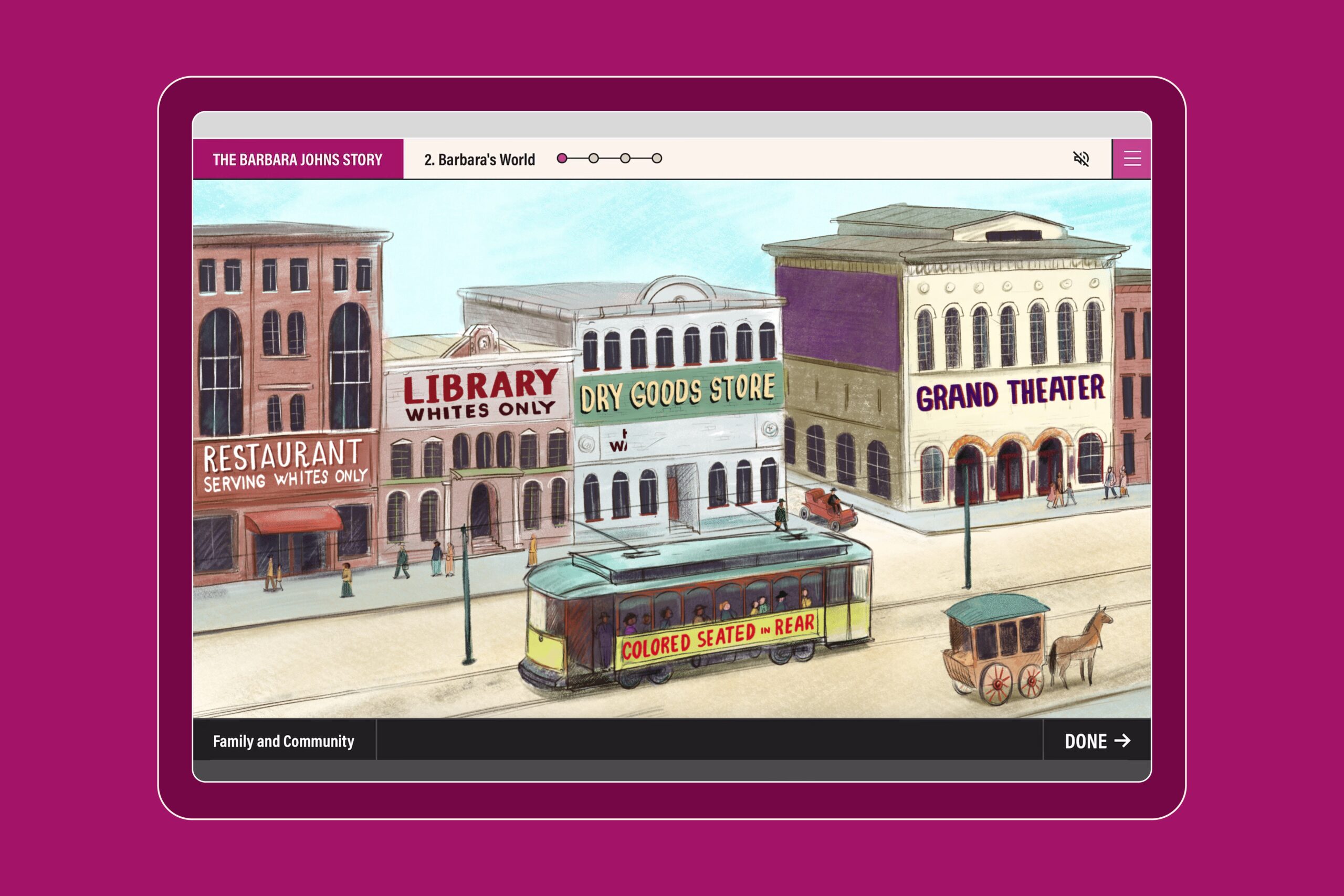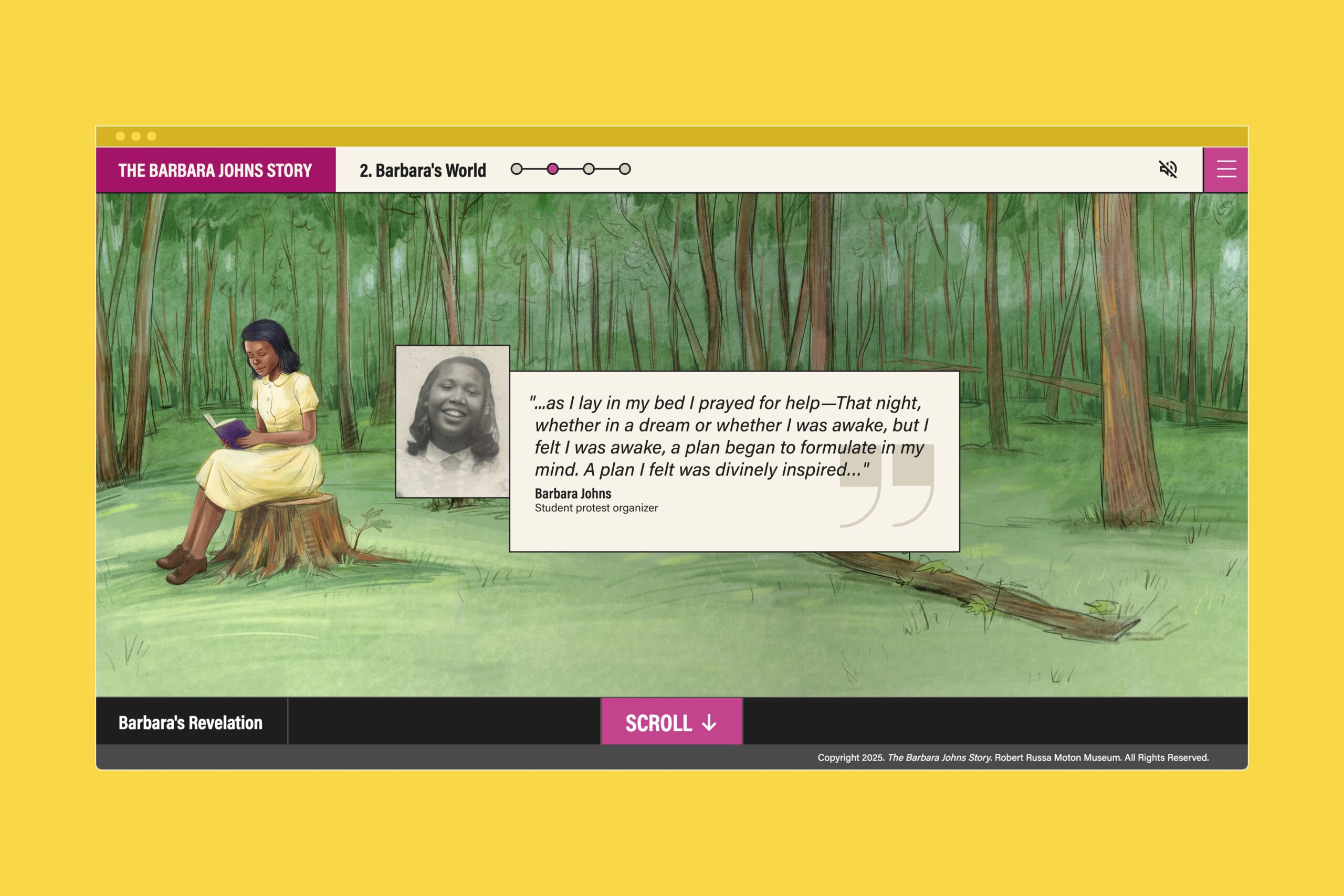The Barbara Johns Story: Fighting for Equality in America’s Public Schools is an interactive educational documentary by Richard Wormser, in collaboration with the Robert Russa Moton Museum, designed for use in middle school and high school social studies classes. Designed by C&G Partners, the website is adapted from Wormser’s Peabody Award-winning series The Rise and Fall of Jim Crow. It highlights the 1951 student strike to demand equal education in all public schools in Farmville, Virginia that Barbara Johns led when she was 16. 
The modular site combines short films, archival materials, illustrations, and interactive features to engage students and inspire civic action through an inquiry-based approach. The site is structured around three multimedia chapters, each anchored by a supporting question in the overall inquiry. Chapter 1: Introduction – Who was Barbara Johns, and what was school like for her? Chapter 2: Barbara’s World – What led Barbara Johns to take action? Chapter 3: Protest! – How did Barbara Johns “seize her moment” and make change?

The narrative extends beyond Barbara Johns to include the voices of her schoolmates, family, and community—those who stood with her and helped bring about change. Their stories are threaded throughout the chapters, connected through guiding questions, powerful quotes, illustrations, audio clips, classroom activities, documentary videos, music, and ambient sound design, creating a cohesive and immersive educational journey.

Each chapter features an interactive digital activity, along with two downloadable classroom lesson plans suitable for individual or group use offline.
These materials are designed for flexible integration into a variety of instructional settings, supporting both teacher-guided lessons and student-led exploration.
This approach allows educators to adapt the content to diverse learning styles and classroom needs while promoting engagement and deeper understanding.
The color palette and typography draw inspiration from 19th- and early 20th-century strike posters and civil rights-era publications, blending historical authenticity with a contemporary design sensibility. This fusion helps connect students to the past in a visually compelling way, reinforcing the educational impact of the documentary.

Extensive research was conducted to ensure the historical accuracy of the illustrations, with careful attention to period-appropriate colors, clothing styles, facial features, and other visual details. The goal was to authentically reflect the era while remaining accessible and engaging for today’s students.

It was essential that the project resonate with students in Barbara Johns’ age group—the very generation it seeks to inspire. The sound design is inspired by spirituals, call and response, and period music, rendered in a contemporary style. By centering the narrative around a young icon of activism, the site empowers students to see themselves as agents of change. It invites them to “reach for the moon,” just as Barbara did, and to recognize their potential to make a lasting impact.

Designed for middle and high school classrooms, homeschool settings, and flexible learning environments, The Barbara Johns Story extends far beyond Virginia—resonating with students across the country. At its core is a compelling question that invites students to consider the power of informed civic action: How can you seize your moment to make change?
![C&G Partners [logo]](https://www.cgpartnersllc.com/wp-content/uploads/2025/09/CGP20_black_orange_RGB.png)
